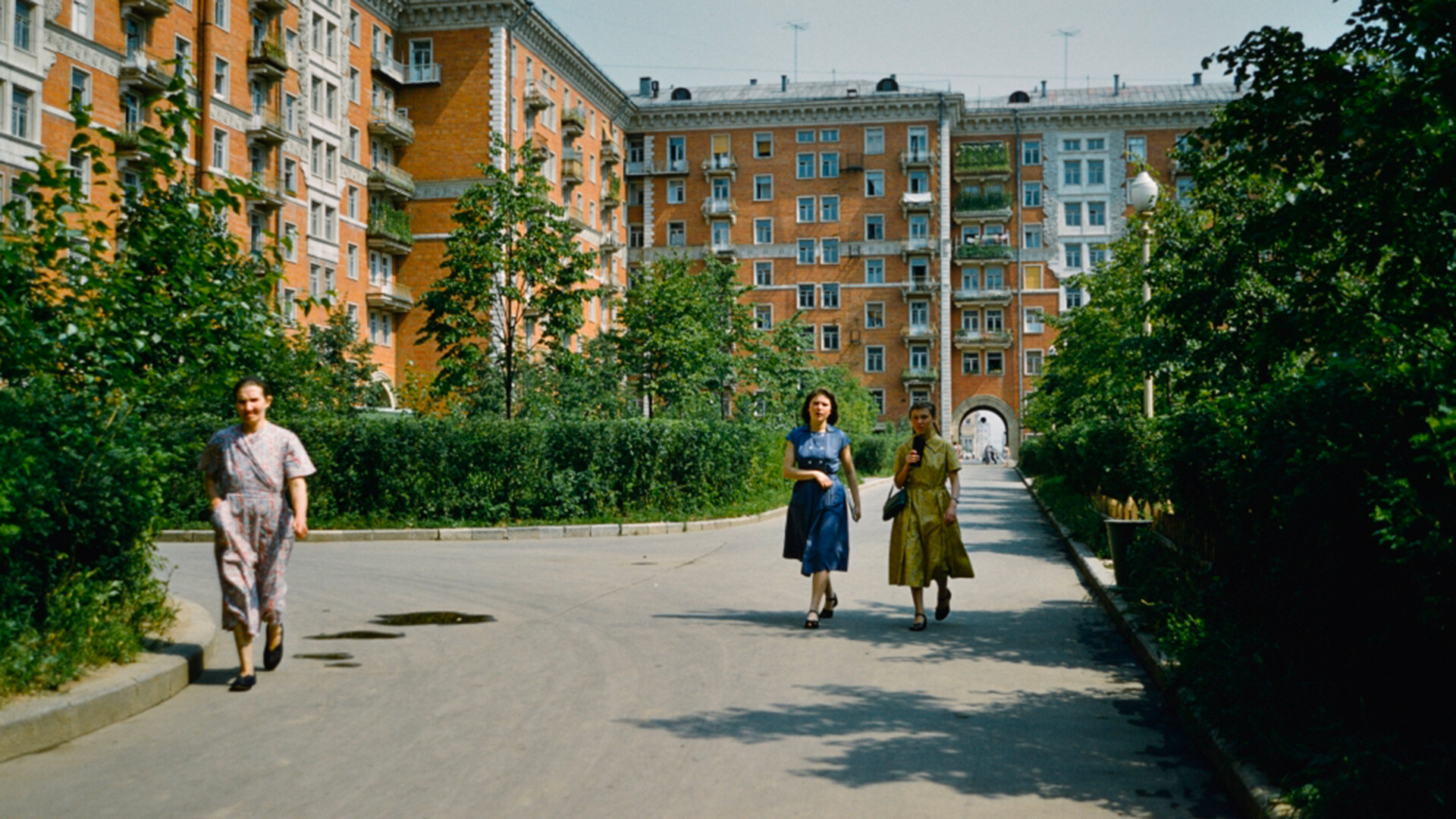
American historian John William Reps explored urbanism and public spaces in a wide variety of countries around the world. In the summer of 1964, he also visited the USSR, including Moscow and Leningrad (now St. Petersburg), where he took many color photographs of the most ordinary districts and courtyards, as well as new residential complexes, which were still in construction. Thanks to his photographic collection, we can immerse ourselves in the atmosphere of the Soviet 1960s.
The early Soviet industrialization increased the urban population, but didn’t manage to provide them with accommodations. So for several decades, people lived in communal apartments or dorms. Nikita Khrushchev was famous for many things, including the de-Stalinization process in the USSR. But his name was truly immortalized in the khrushchyovka residential buildings.
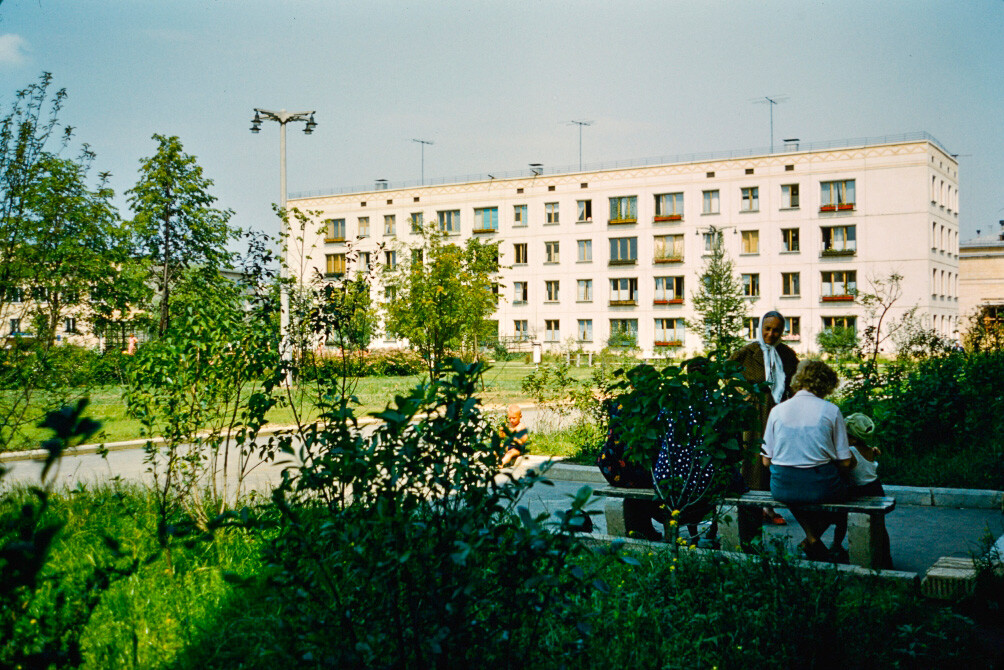
In the early 1960s, Khrushchev launched a massive construction building process that was aimed at dealing with the living space crisis.
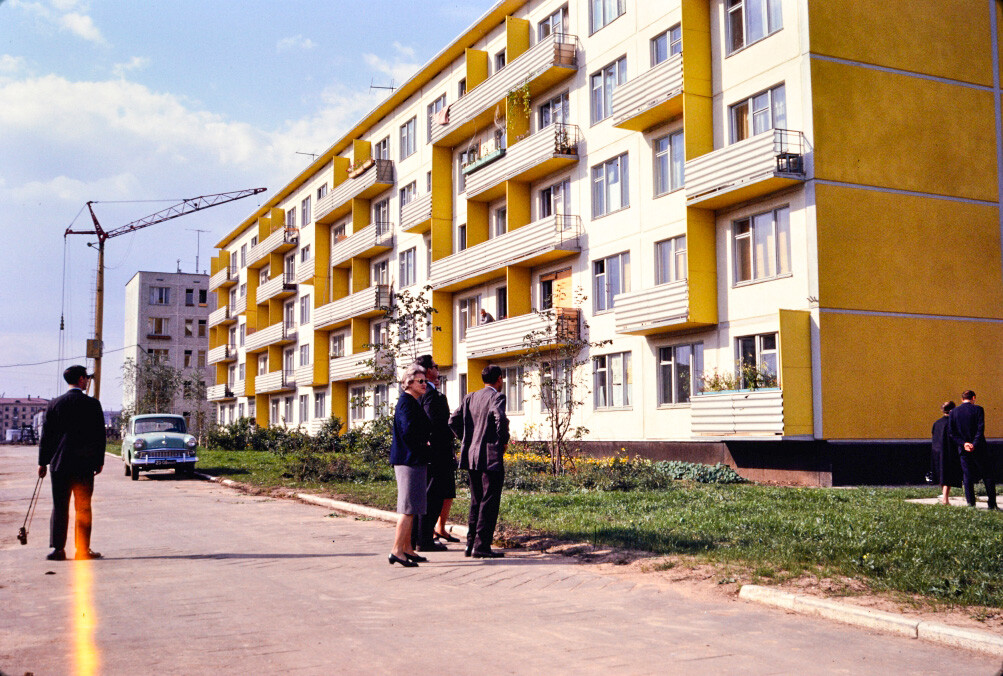
This is how a typical khrushchyovka looked. A low-cost concrete-paneled building of three to five stories, it had incredibly small apartments and no elevators. Though, people were just happy to get their own living space and move out of communal apartments or dorms.
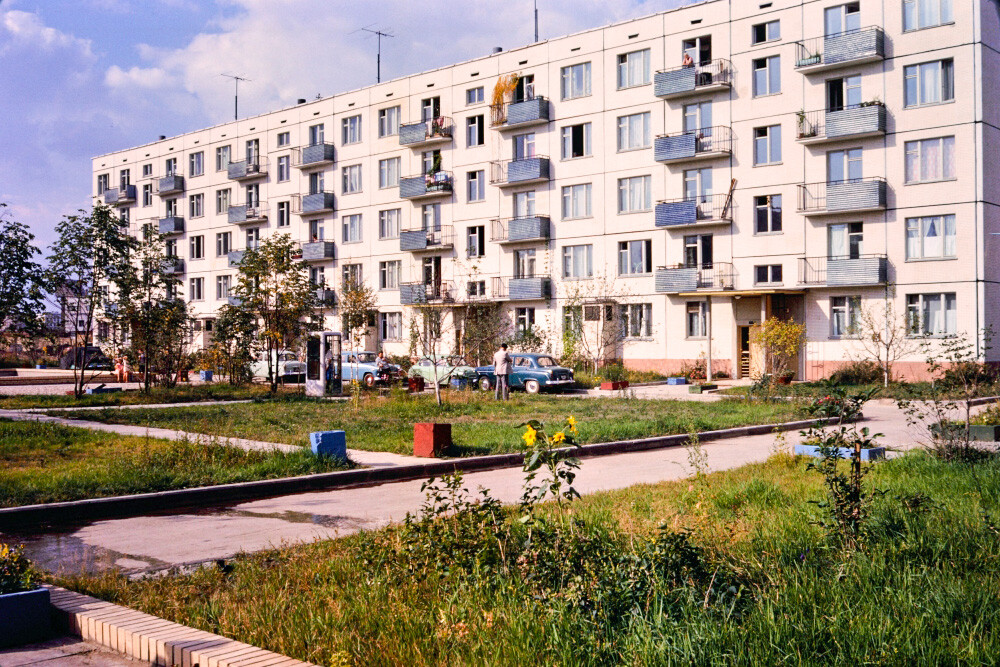
The authorities did their best to arrange the urban space within the newly built districts. A green area with trees…
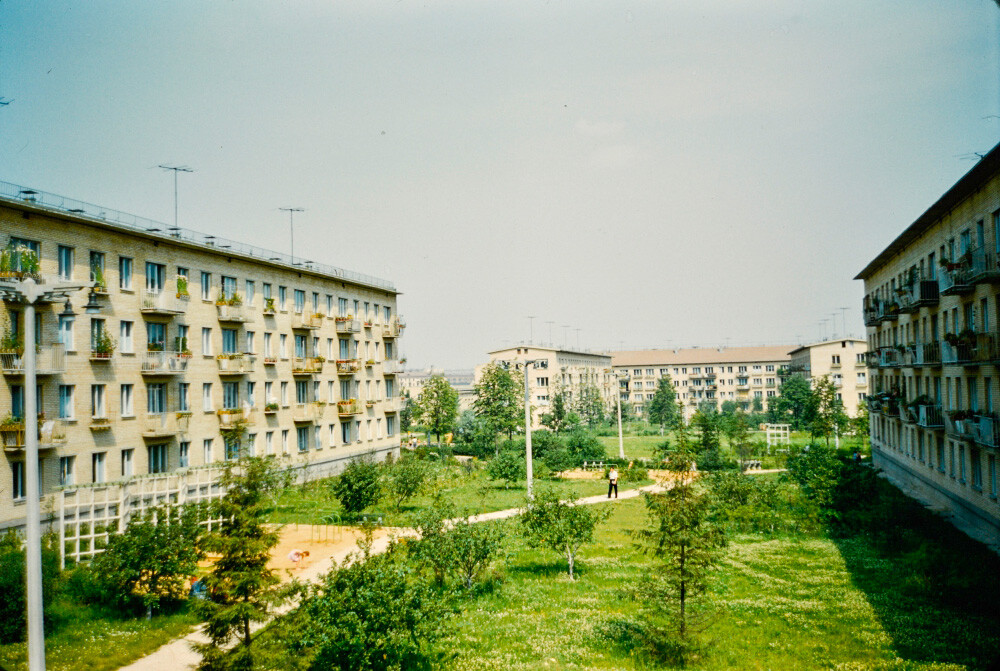
…playgrounds in every courtyard…
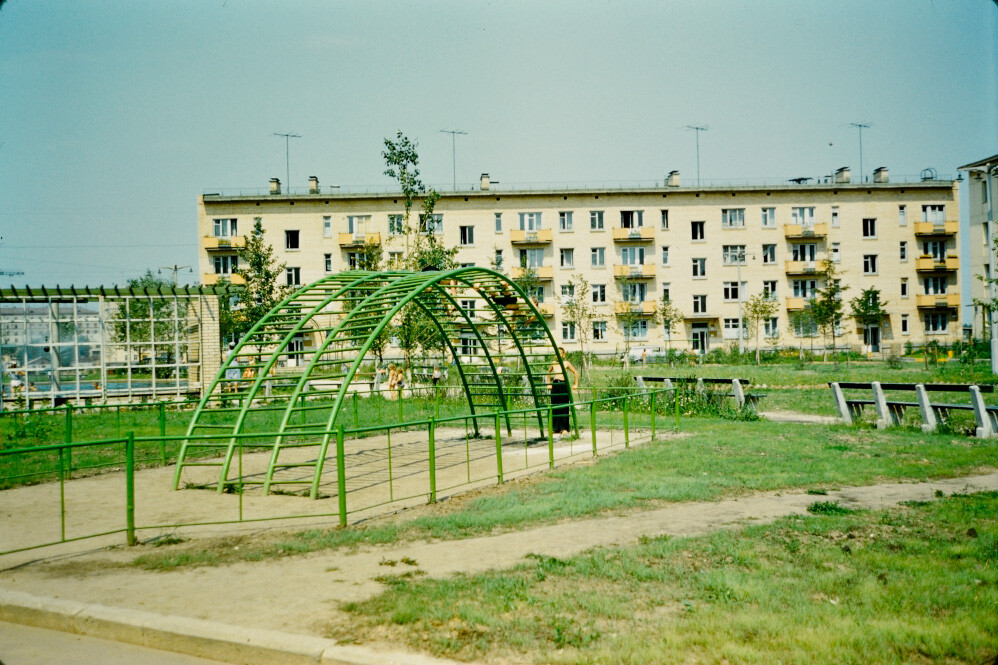
…and even fountains! Though this “luxurious” decoration was more of a rarity, rather than a rule. But, happy kids used them for summer bathing, not just for looking at.
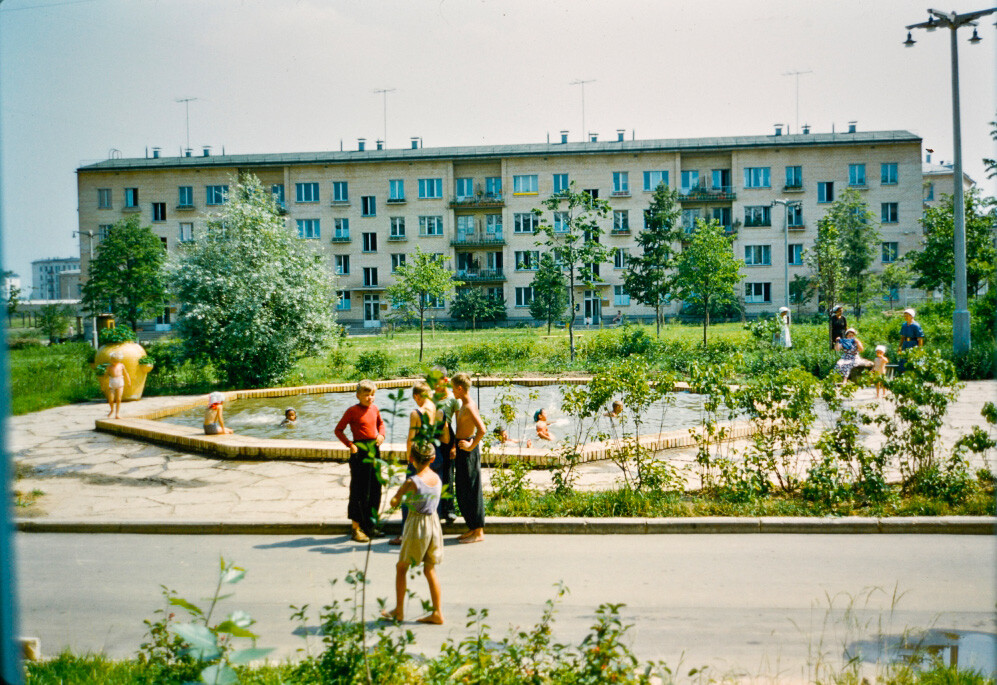
All the new districts had their own schools in the neighborhood, so that kids could walk to the nearest one on their own.
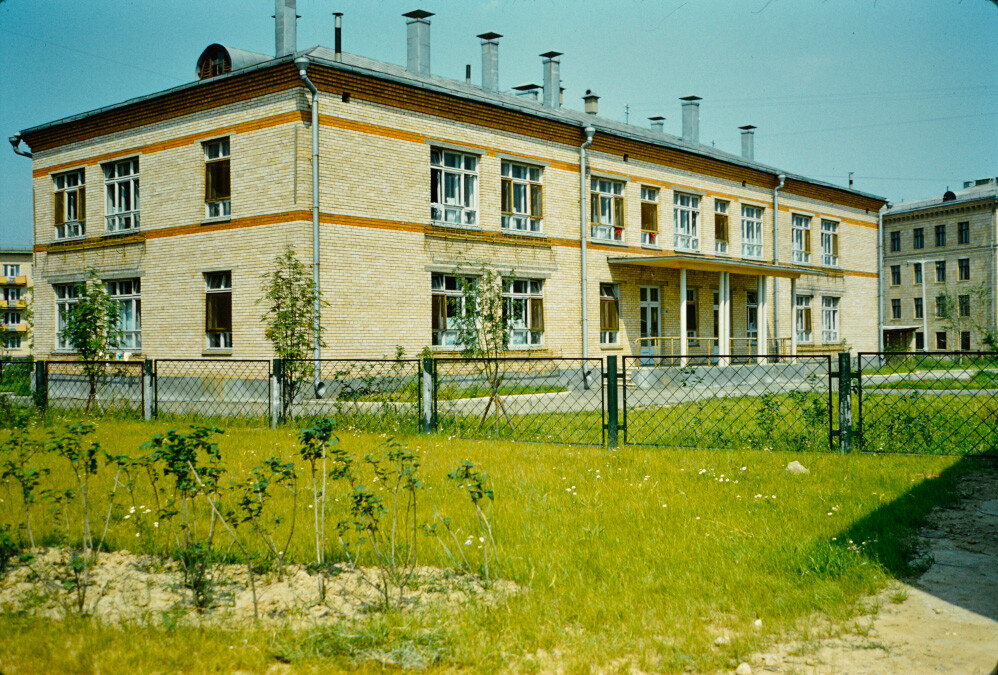
And, of course, nursery schools and kindergartens for smaller kids. Parents could take their kids to the nursery from a very young age - even several months old - and return back to work for the progressive Soviet future.
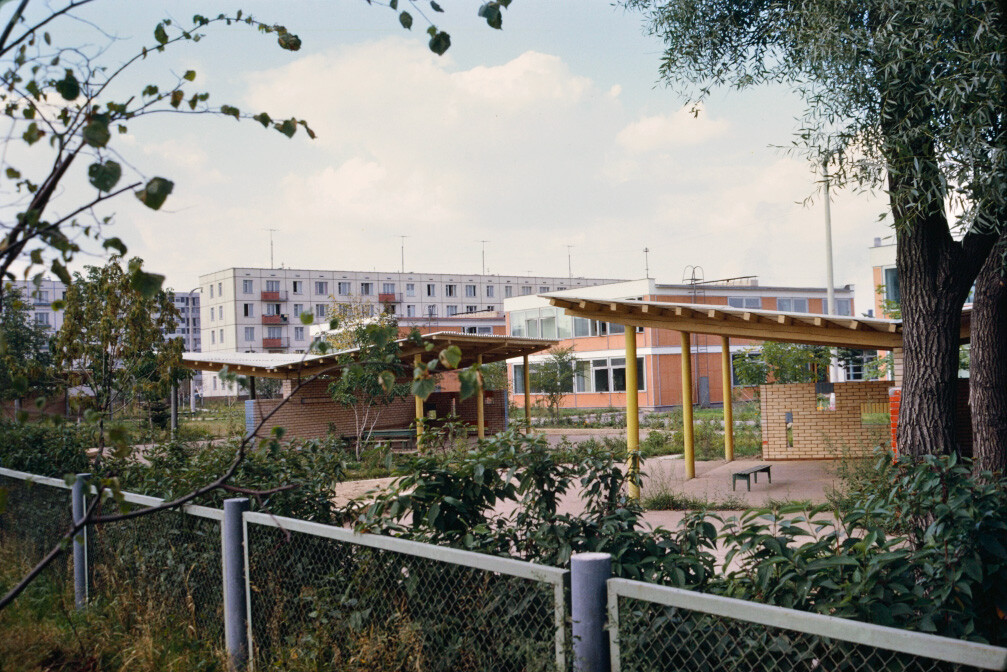
New districts had typical retail buildings that often had a universal range of goods represented.
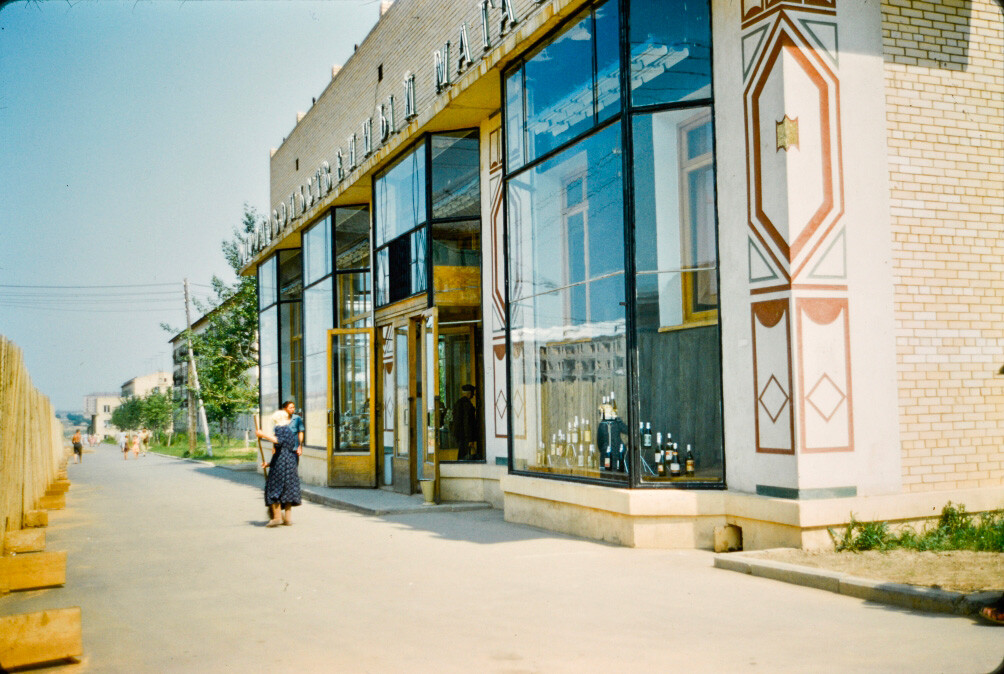
John William Reps was amazed with a net aimed at preventing chunks of the facade from falling onto unwitting pedestrians.
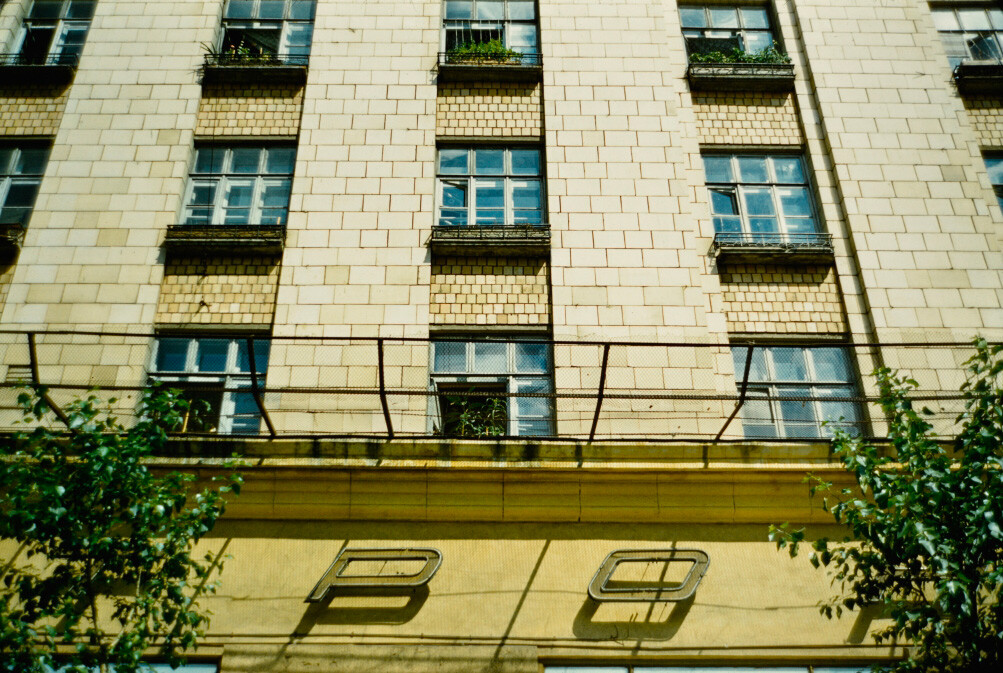
Khrushchyovkas had very small balconies and, firstly, people tried to arrange some gardening there… but soon, they turned into an extra storage space, as small apartments didn’t have much of it.
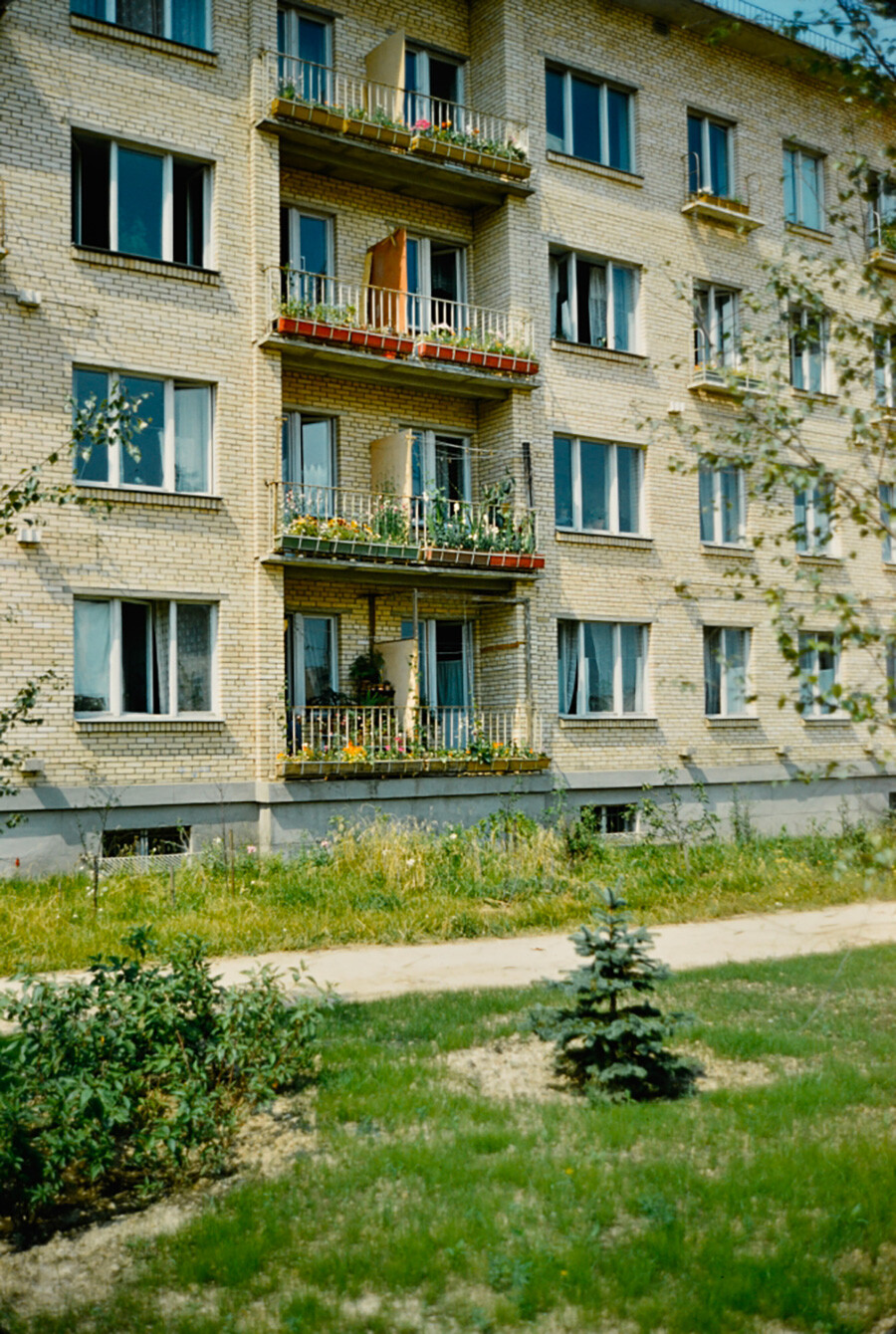
And below is an interior courtyard and park area with a housing block built in Stalin’s era. Usually, such buildings had more stories (which required an elevator) and more facade decorations.
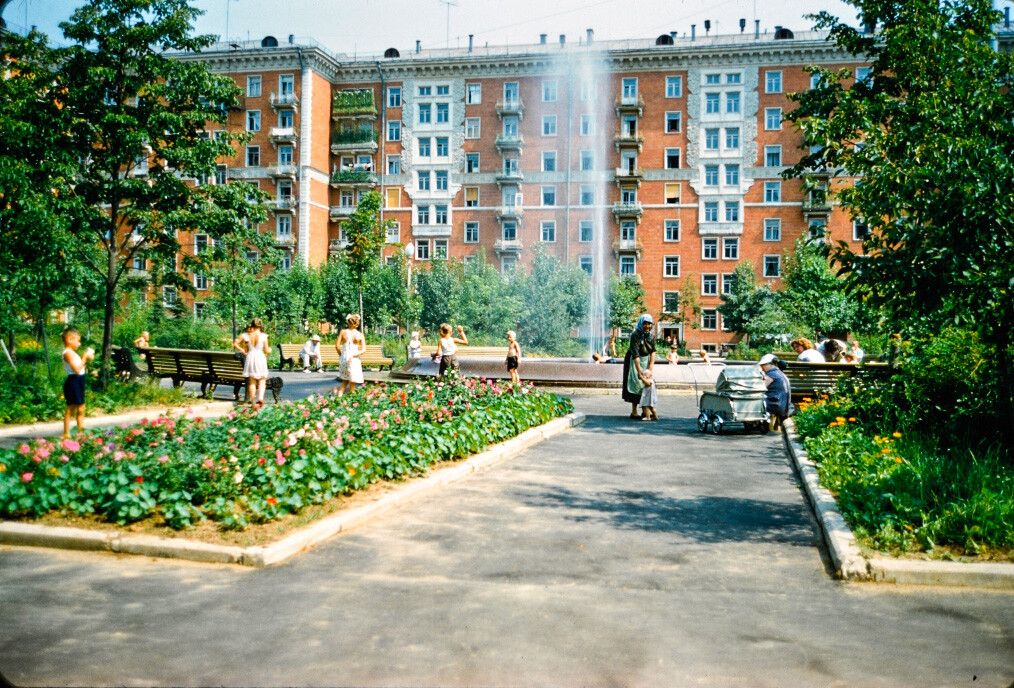
The photos above were all from Moscow and below you can find some from Leningrad (now St. Petersburg). Streets in new residential districts were built wide and included growing trees along the roads to create shade and to prevent dust and dirt from reaching pedestrians.
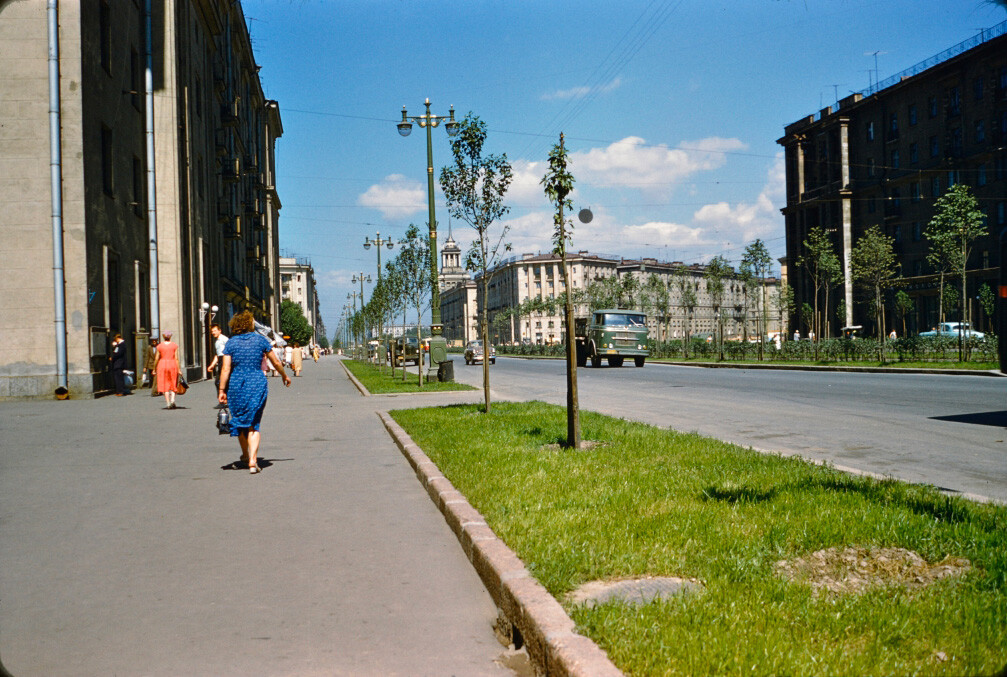
In early residential buildings, all the ground levels were made into living apartments to maximize the available space. Later, architects suggested turning ground floors into retail areas.
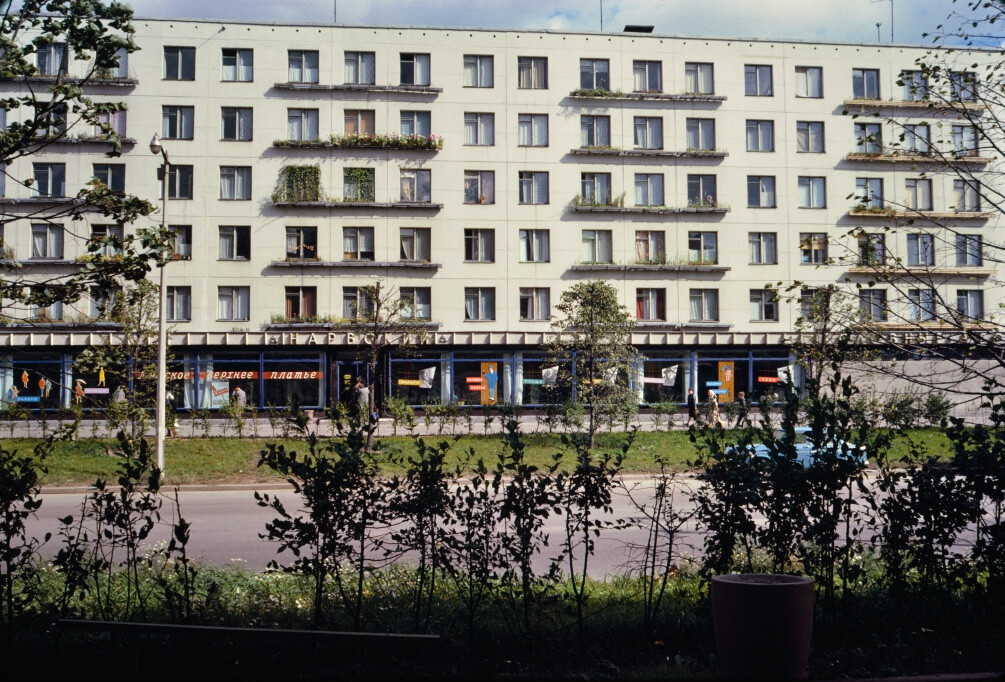
In Leningrad, John William Reps visited just built massive complexes with high-rise housing.
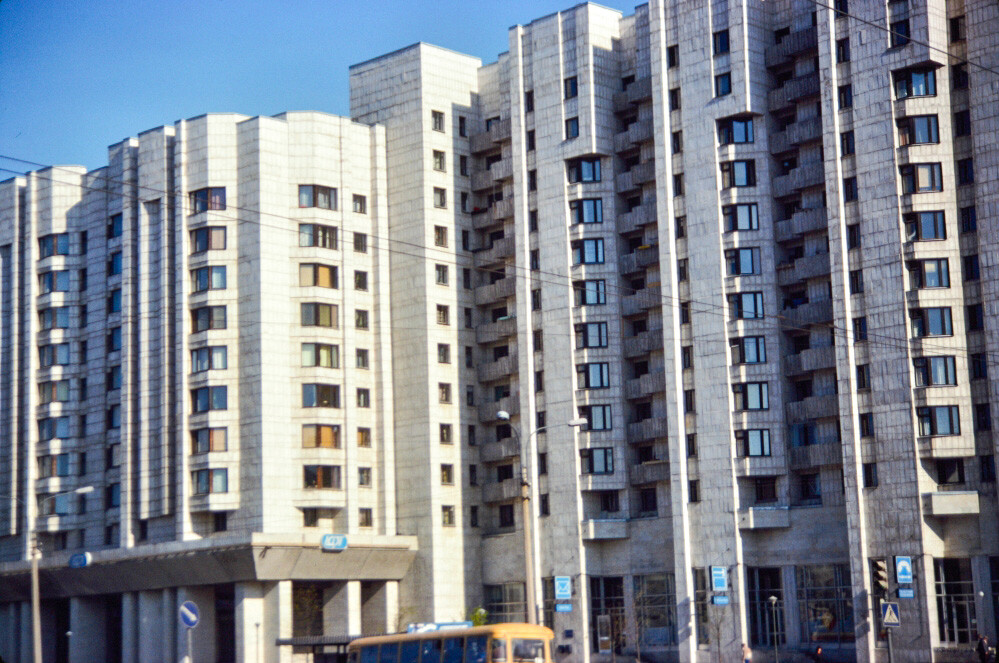
And some earlier buildings in constructivism style, where any space could have been turned into a playground of sorts.
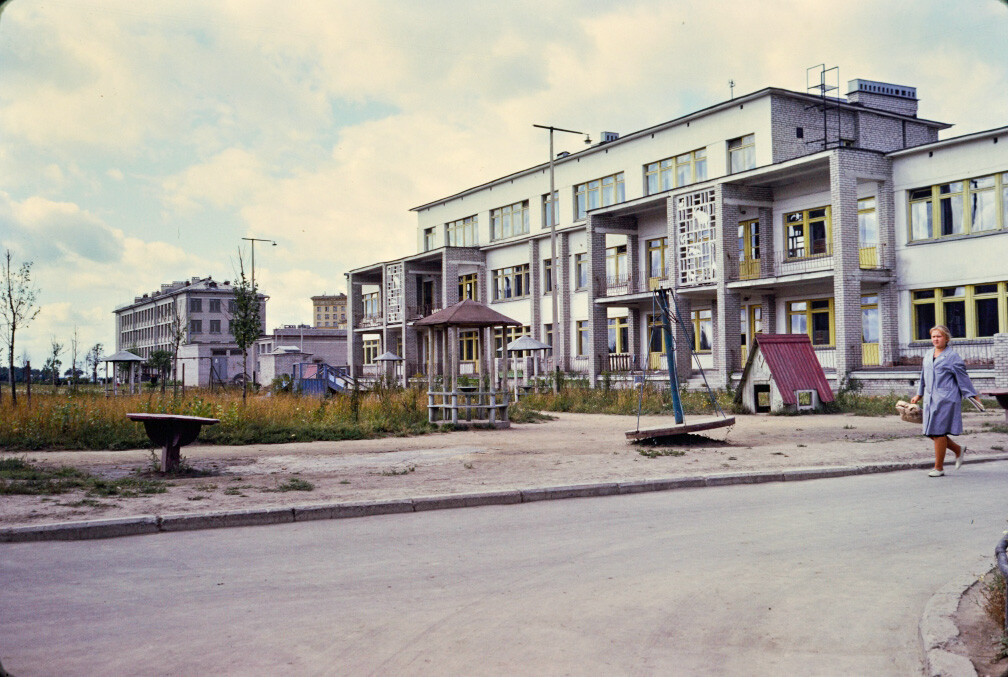
A lack of space and balconies forced many people to dry their laundry outside, so this is a typical thing for any surrounding areas of Soviet apartment blocks.
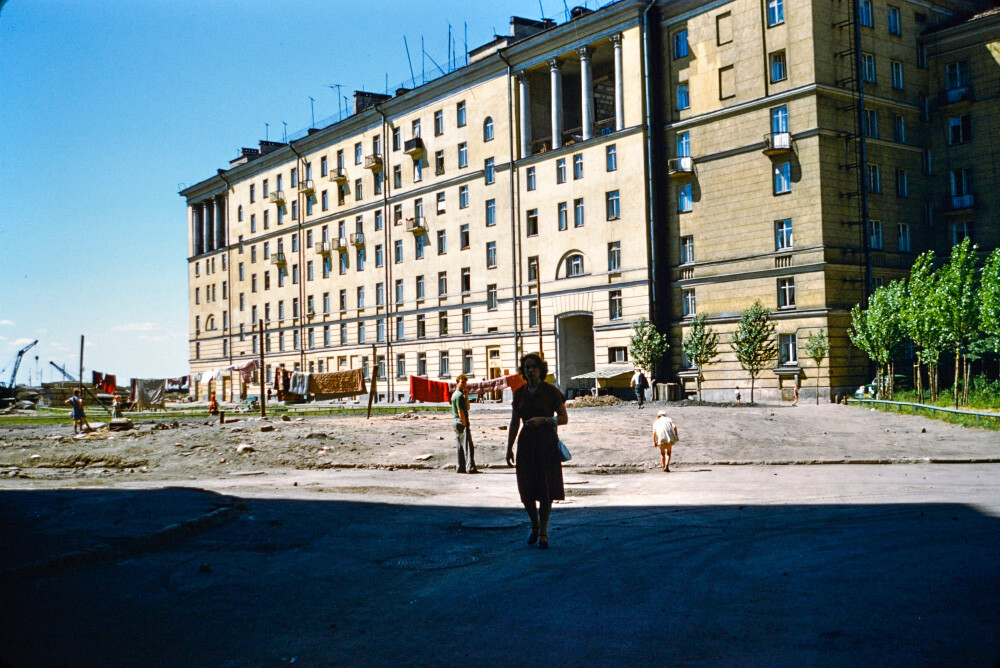
So that you didn’t think that everyone lived only in a mass built small khrushchyovka in the USSR, here’s another Leningrad example of a gigantic ten-story residential complex.
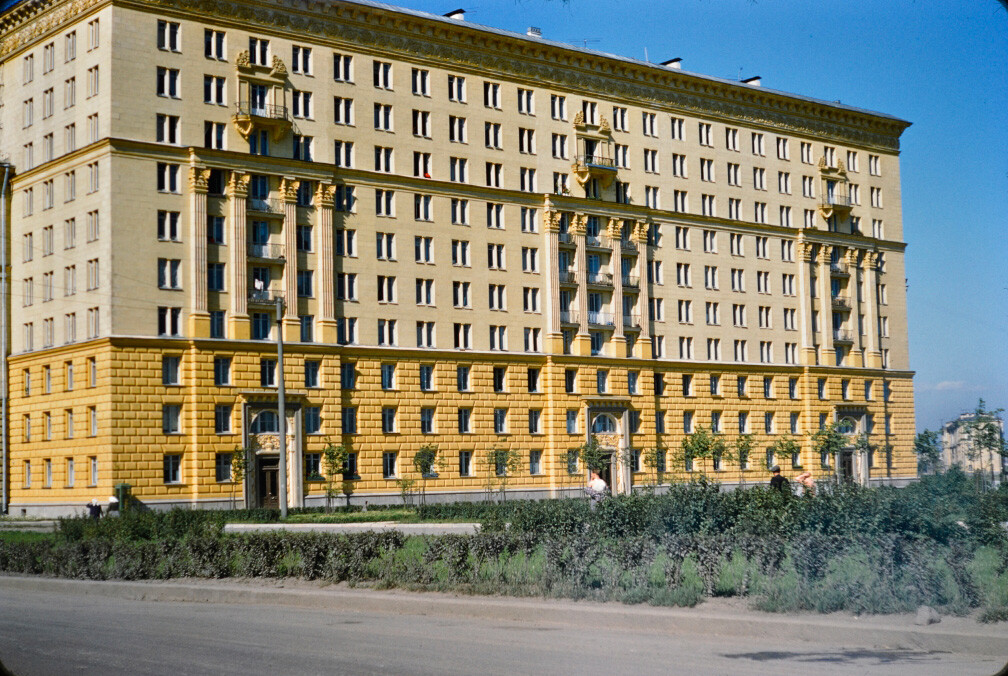
Dear readers,
Our website and social media accounts are under threat of being restricted or banned, due to the current circumstances. So, to keep up with our latest content, simply do the following:
If using any of Russia Beyond's content, partly or in full, always provide an active hyperlink to the original material.
Subscribe
to our newsletter!
Get the week's best stories straight to your inbox